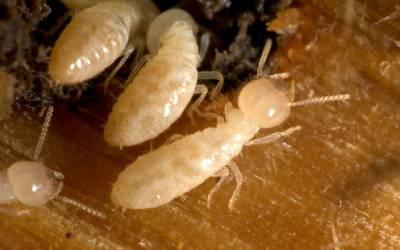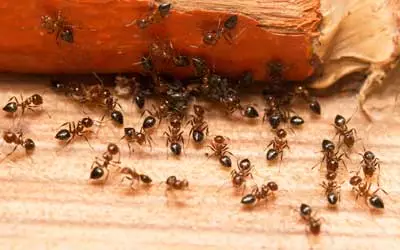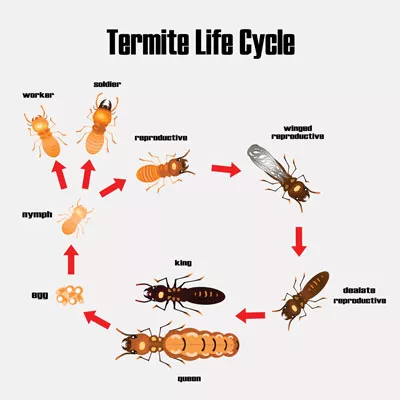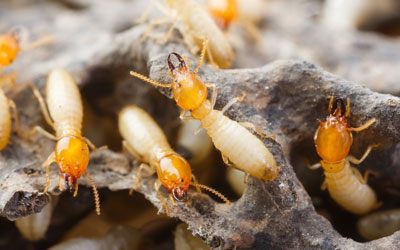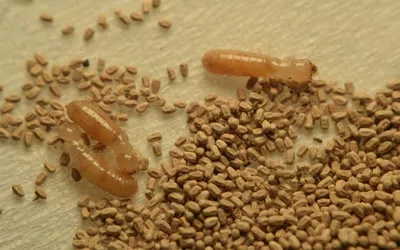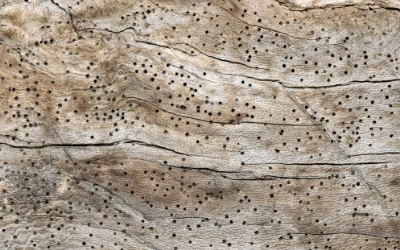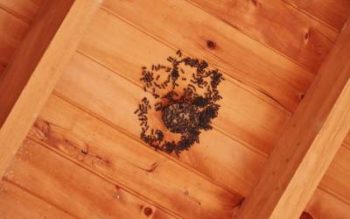
Are you noticing an abundance of insect sightings in your home during the fall and winter? Unfortunately, it’s not your imagination — in fact, you may have a fall pest infestation brewing within your walls. It’s the result of pests trying to get out of the increasingly cold weather. Some of these insects and other creatures will migrate to warmer climates or burrow under debris, while others may decide that your home has just the perfect climate needed to thrive. This phenomenon is referred to as overwintering, and it’s important to notice warning signs before it gets out of hand.
It’s never fun when you find a resident of the Great Outdoors crawling on the countertops or in the corners of the room. What’s even worse, and what could cause even more damage, are the creatures that hide where you can’t see them. The pests most likely to take refuge here can include Asian Lady beetles, stink bugs, termites, wasps and rodents. Let’s explore more about these fall pests.
Asian Lady Beetle
Let’s say you find what looks like a ladybug, an orange-ish, reddish bug that may or may not have spots. If it’s larger than your usual garden darling, there’s a chance you may be looking at an Asian Lady beetle. And if you’ve found one, the odds are good of there being many, many more. Asian Lady beetles stick together in groups and use pheromones to communicate their location. That means that if one comes into your home to get out of the cold, the result can be a large infestation of fall pests. These bugs may not eat at your home’s structure or sting its residents, but their waste can stain as well as trigger an allergic reaction or breathing difficulties in sensitive individuals. You can prevent this, along with most other insect infestations, by making sure your home is sufficiently sealed from the elements.
Stink Bugs
It’s safe to say that no one is thrilled by the presence of a stink bug. The most common breed in the United States is the Brown Marmorated variety, which is an invasive species from Asia. These smelly squatters are flat and shaped like a shield, colored in mottled shades of brown and gray and sized around ¼” to ⅜”. They’re fond of quiet parts of your home like the attic or crawlspace, or anywhere else where they feel they won’t be bothered. And if they get discovered and feel threatened, they’ll release a deeply unpleasant odor that gives the bug its name. Because of that, it’s best to leave treatment to the professionals at Loyal Pest Control.
Termites
Termites are easily the most destructive pest in North America. They’re a serious problem, especially when considering that the annual cost of termite damage in the US is up to $30 billion. Termites, if you have them, are always trying to enter your house. But fall and winter is when subterranean termites – the most damaging species – tend to burrow deep into the ground to wait out the cold weather. So if you get hit with an infestation you may not notice until spring, and by then you’ll likely be faced with a costly repair and a mess of inconvenience. Once termites can get in your home, they will consume wood and anything else that contains cellulose. Signs of termites in your home may include blisters on painted surfaces, hollow-sounding wood, unexplained pinhole-sized holes and more.
Wasps
Most wasp colonies do not overwinter in the colder season, which leaves the workers to die with the oncoming winter. Fertilized queens, however, survive the cold outdoors in hollow logs, stumps or under leaves – or in certain structures, such as the attic of your home. Think right now: is your attic vent screened from the outdoors? If not, calling us to install one for you can prevent wasps and all manner of fall pests from making themselves comfortable without you knowing.
Rodents
Squirrels, roof rats and mice are all agile creatures and excellent climbers. You can see them making their way from branch to branch and across fence lines. With that in mind it’s easy to think that it wouldn’t be hard to get into your attic and make a nest. Luckily these rodents don’t tend to be very quiet. After some time you’ll hear them scratching or gnawing from up above or inside the walls. Those are both good signs that you have a rodent inside your attic or wall voids, and that means it’s time to call an experienced rodent exterminator like Loyal Pest Control
Experienced Exterminators in East & Central Virginia
Loyal Termite & Pest Control has been proud to provide the citizens of East and Central Virginia with quality pest control services for the past sixty years. From bedbugs to rodents, if it shouldn’t be there then we can help you get rid of it. That’s why, if overwintering has invited some unwelcome fall pests into your home, we’re here to help. Contact us now for a free quote!

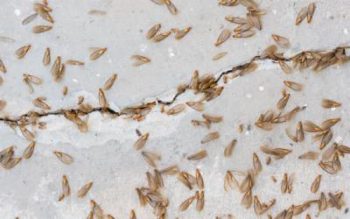 Have you spotted some winged termites flying around your home recently? With spring right around the corner here in Eastern & Central VA, termites are starting to swarm again to find new places to live and sources of food. Causing an estimated $5 billion every year in repair and extermination costs in the United States alone, there is no more destructive pest out there. You have to act quickly when you find termites on your property. Looking to learn how to get rid of flying termites? Read on for advice from our termite exterminators at Loyal Termite & Pest Control!
Have you spotted some winged termites flying around your home recently? With spring right around the corner here in Eastern & Central VA, termites are starting to swarm again to find new places to live and sources of food. Causing an estimated $5 billion every year in repair and extermination costs in the United States alone, there is no more destructive pest out there. You have to act quickly when you find termites on your property. Looking to learn how to get rid of flying termites? Read on for advice from our termite exterminators at Loyal Termite & Pest Control!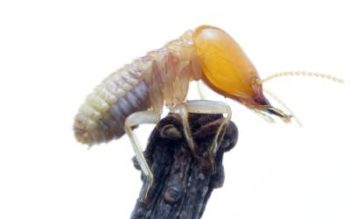 A termite infestation is one of the most feared pest problems in the country. In Eastern & Central Virginia, homeowners and businesses owners start to call us every spring about their potential termite problems. Once the winter starts to wane,
A termite infestation is one of the most feared pest problems in the country. In Eastern & Central Virginia, homeowners and businesses owners start to call us every spring about their potential termite problems. Once the winter starts to wane, 